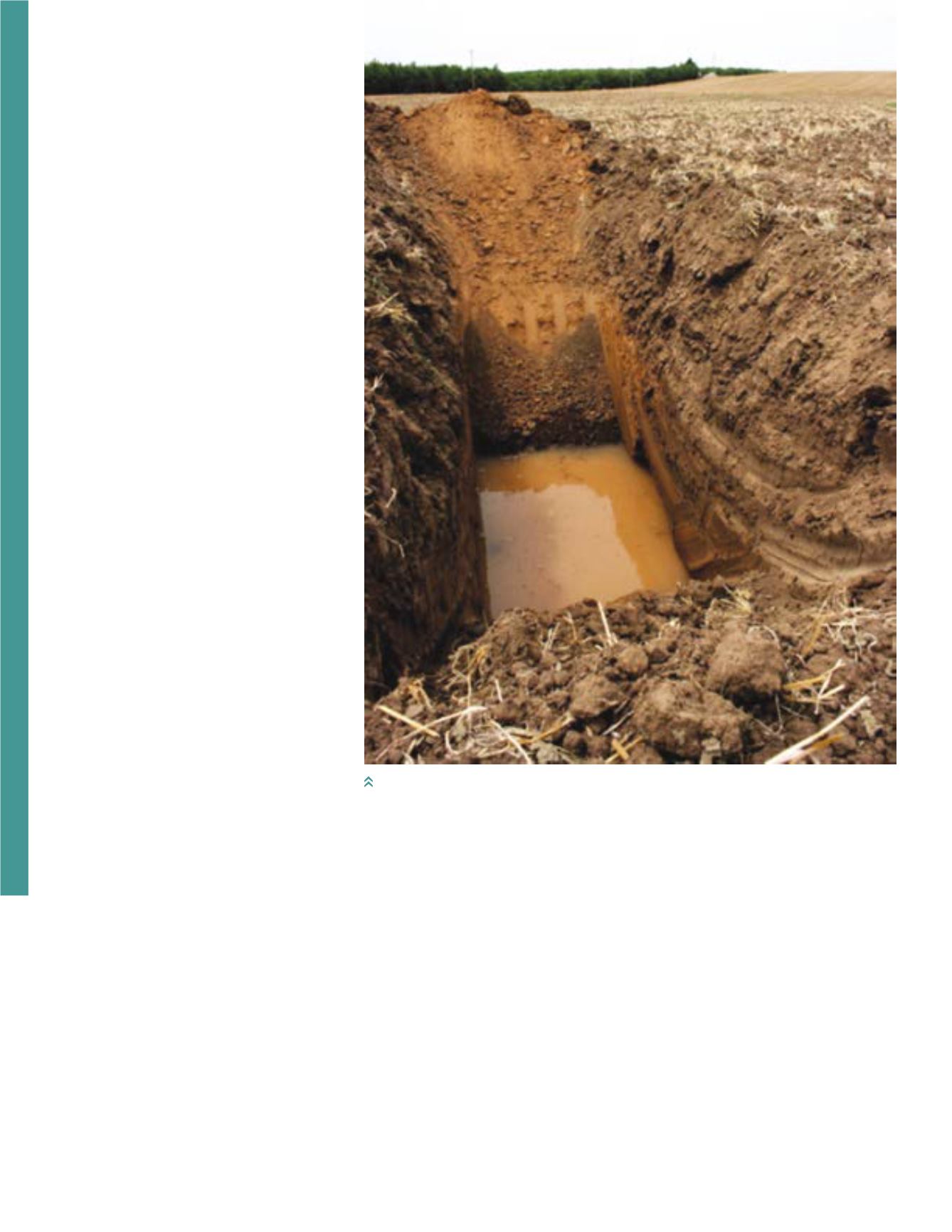
36
Almond Facts
SEPTEMBER | OCTOBER 2015
TIME TO CONSIDER
devastating pest. Ring nematodes,
which are more common in sandy soils,
can cause severe stunting in almond
trees as well as predispose the tree
to bacterial canker. There is no true
resistance to ring nematodes resistance
among current rootstocks, but ‘Viking’,
‘Guardian’ and ‘Lovell’ are the most
tolerant. Root lesion nematodes are
a particularly tiny type of nematode
found in all soil types. It causes stunting
of trees that impacts vigor and yield.
Typically, trees with high inherent vigor
are able to “outgrow” the stunting
caused by this nematode. Therefore,
more vigorous rootstocks (e.g. peach
- almond hybrids) tend to be more
tolerant of root lesion nematode.
Soils that are prone to saturation may
have an increased risk of tree loss due
to lack of oxygen (i.e. “wet feet”) or
Phytophthora. In these soils, plum or
plum parentage rootstocks should be
considered. Among the plum rootstocks,
the most experience has been with
‘Marianna 26-24, which is incompatible
with ‘Nonpareil’ and produces a lot
of root suckers. Newer peach-plum/
plum-almond crosses have been
released in recent years. These include
‘Krymsk-86’ and ‘RootPac-R’ and
both are compatible with ‘Nonpareil.’
‘Krymsk-86’ has been planted widely
in the Sacramento Valley as it tends
to have less blow-over and tolerates
saturated soil conditions in the spring.
Research has found Krymsk-86 tolerant
to
Phytophthora megasperma
, a common
soil disease. ‘Krymsk-86’, however, is
not resistant to rootknot nematode and
is not tolerant to sodium and chloride.
‘RootPac-R’ is a relatively new rootstock
in California and research and field
observations are still being conducted.
When choosing a rootstock, take into
account all of the factors of the future
orchard. In many cases, there are
multiple issues that may not be covered
completely by a single rootstock (e.g. high
salts, high nematodes). In these cases,
it is important to consider the options
and determine which characteristics
are manageable with orchard cultural
practices, and select the rootstock for the
more challenging condition.
Variety Selection.
Choosing varieties for the orchard can be challenging. Variety selection should
take into account disease pressure, bloom and harvest timing, marketability,
early fall rain potential, bee availability, and operational timing. For the most
part, there are three types of variety systems to be considered: a ‘Nonpareil’
containing orchard, a self-compatible orchard (e.g. ‘Independence’ or ‘Lonestar’),
or a hard shell orchard (e.g. ‘Butte’ and ‘Padre’). Each system has its strengths
and weaknesses and should be discussed with local farmers, marketers, and UC
Farm Advisors.
The decisions that are made in establishing an orchard are critical for
establishing a highly productive orchard. If questions arise, seek assistance in
order to develop the best development plan. Since it is very difficult to make
major changes to the orchard after planting, this is the critical time to do the
research and put into action the best development plan for your operation.
Backhoe pits reveal many things including the potential of a water table and soil stratification. They
should be dug in any parcel that is being considered for a future almond planting.


